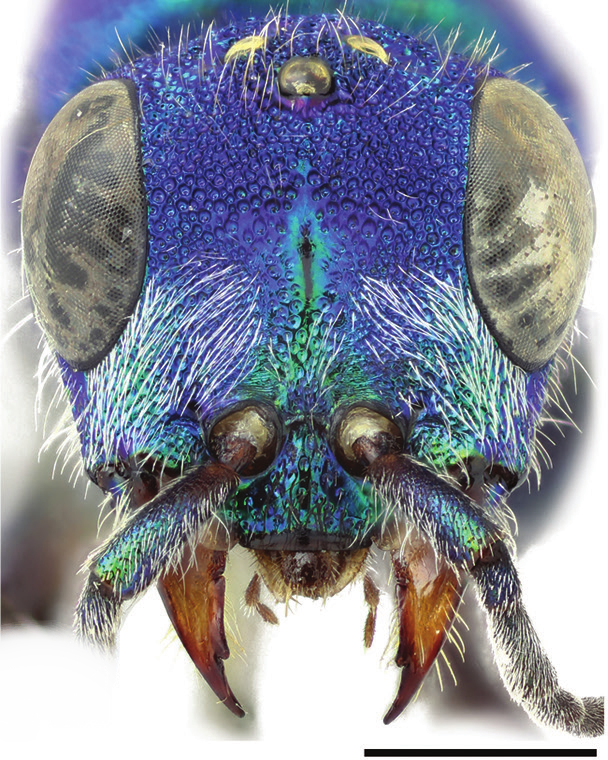Chrysura austriaca
- Innhold
- Diagnosis
- Distribution
- Biology
Diagnosis
Figure 201
Head, frontal view: C. austriaca ♀. Scale 1 mm.
Length 8–12 mm.
The species differs from other similarly coloured species of Chrysura by its ventrally broader head (Fig. 201) and simple mandible, which lacks or has only a very small subapical tooth (Fig. 201). The antennal segments of the male are not ventrally swollen. The head and mesosoma are blue, often with golden green reflections laterally on the mesoscutum, and the metasoma is golden red.
Distribution
Lithuania. Very rare. The species is known from three localities in Lithuania (Puvočiai, Trakai, Vilnius) (Orlovskytė et al. 2010).
Trans-Palearctic: from Europe and northern Africa to Siberia and Japan (Linsenmaier 1997, Kurzenko and Lelej 2007).
Biology
Habitat: forest margins and gardens. Often found from wooden poles, walls, fence posts, loess, clay or old brick walls or rocks (Trautmann 1927, Kunz 1994, Linsenmaier 1997). Adults occasionally visit flowers of Apiaceae and Euphorbiaceae (Linsenmaier 1997, Rosa 2004).
Flight period: June to early August. In Lithuania, specimens have been collected in July and early August.
Host: Hoplitis adunca (Panzer) (Megachilidae) (e.g. Frey-Gessner 1887, Trautmann and Trautmann 1919, Linsenmaier 1959), possibly also H. anthocopoides (Schenck) and Osmia parietina Curtis (Schenck 1856, Mocsáry 1879, Banaszak 1980).
